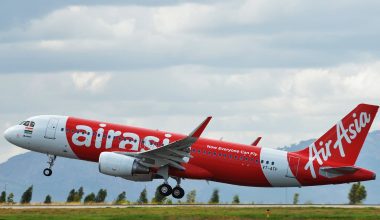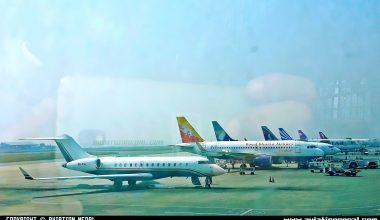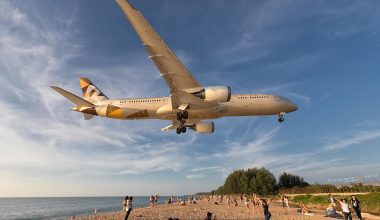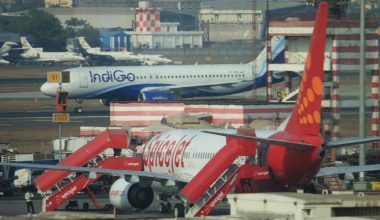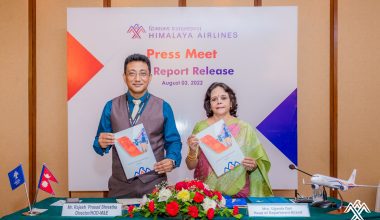China, the world’s most populous country, is one of the fastest-growing global aviation markets. Over the last several decades, this East Asian country has witnessed a dramatic expansion of commercial air operations. China is one of the largest contributors to the Asia-Pacific region’s overall traffic and spearheads the region’s traffic surge.
Driven largely by the country’s emerging middle-class, air passengers rose from 229 million in 2009 to 659.93 million in 2019. The boom in passenger volume signifies a rapid expansion of the airline industry and existing airports, construction of new air facilities, etc. This article provides a deep insight into the civil aviation industry in China, including its regulator, number of airlines, aerospace manufacturers, airports in operation, etc. Let’s take off on an informational journey to the Chinese aviation industry.

Regulator of the Chinese civil aviation industry
The Civil Aviation Administration of China (CAAC) is the topmost civil aviation authority responsible for national civil aviation affairs in China. It is a ministry-level organ (under the Ministry of Transport) of China that oversees civil aviation within the country. Furthermore, it issues regulations and decisions concerning civil aviation activities within its jurisdiction and investigates accidents and incidents.
The CAAC monitors the work of representatives of civil aviation manufacturers and grants type certification to new aircraft. Besides, it also grants Air Operator’s Certificates to new Chinese carriers to carry out commercial air transport operations.
Airports in China
The increased demand for air travel has spurred the growth of large commercial service airports in China. There are over 240 commercial airports in China, circulating more than 500 million travelers in and out of planes each year. Some of the airports in China hold a spot among the world’s busiest airports, as measured by passengers throughout.
As of 2021, China has 13 airports in the top 50, namely
- Guangzhou Baiyun International Airport
- Chengdu Shuangliu International Airport
- Shenzhen Baoan International Airport
- Chongqing Jiangbei International Airport
- Shanghai-Hongqiao International Airport
- Beijing Capital International Airport,
- Kunming Changshui International Airport
- Shanghai Pudong International Airport
- Xi’an Xianyang International Airport
- Hangzhou Xiaoshan International Airport
- Beijing Daxing International Airport
- Changsha Huanghua International Airport
- Wuhan Tianhe International Airport
In 2020, Guangzhou Baiyun International Airport bumped Hartsfield-Jackson Atlanta International Airport out of its usual spot as the world’s busiest airport by passenger traffic, handling 43.8 million passengers.
Beijing Capital International Airport (PEK) is the biggest airport in China, with over 80 airlines (passengers + cargo). These carriers serve an extensive network of 260 destinations from this airport.

Shanghai Pudong International Airport (PVG) is China’s second biggest airport in terms of airlines and destinations served. Over 60 airlines operate from this airport and serve over 150 destinations globally. It is a major aviation hub of East Asia and one of the two international gateways to Shanghai. It is a hub for Air China, China Eastern Airlines, China Southern Airlines, Juneyao Airlines, Shanghai Airlines, Spring Airlines, etc.
Also Read: Top 5 Best Airports In The USA
Regarding land area, Beijing Daxing International (PKX) and Shanghai Pudong International (PVG) are the largest airports in China. These air facilities are spread over an area of 46.6sq.km (PKX) and 39.9sq.km (PVG) respectively. China’s economic development is intrinsically entwined with its vibrant airport system, which easily connects businesses and economies. They enable individuals to travel and exchange ideas and help get local products to international markets. Airports in China are significant economic drivers providing critical air links to meet domestic and international travel needs.
Airlines in China
There are over 50 airlines in China, including major, low-cost, minor, regional, and cargo carriers. Among them, the largest ones are Baiyun-headquartered China Southern Airlines, Shanghai-based China Eastern Airlines, and the flag carrier Air China. These three carriers collectively make up 71% of the overall market in the People’s Republic of China. These ‘Big Three’ mainland Chinese airlines are majority-owned by the Chinese Government. Besides operating flights to domestic and regional routes, they also spread their wings to international destinations.
As of 2022, China Southern Airlines is the largest carrier measured by passengers carried, with nearly 97 million annual volumes. In terms of fleet size, it is the largest airline in Asia, with 647 aircraft. The fleet includes state-of-the-art aircraft like Airbus A319-100s, A319neos, A320-100s, A320neos, A321-200s, A321neos, A330-200s, A350-900s, A380-800s, Boeing 737-700s, B737-900s, B737 Max 8s, B777-300ERs, B787-8s, B787-9s, Comac ARJ21-700s, B777Fs, etc. The carrier operates over 2000 daily flights to more than 200 destinations from its Guangzhou base.

China Eastern Airlines is the second-largest passenger carrier in China, with an annual traffic volume of over 70 million. It is the seventh-largest airline in the world in terms of fleet size, which currently stands at 608. Airbus A320 series aircraft comprise the backbone of China Eastern Airlines fleet, mostly serving domestic routes. From its hubs at Shanghai Pudong, Hongquio, and Kunming, it serves over 240 destinations in Asia, North America, Europe, etc.
Air Chia is the flagship airline of China that carries the country’s top dignitaries, including the president and premier. Moreover, it also ferries the general public to around 200 destinations within and outside the country. It resorts its pride in operating enviable international networks extending throughout Asia to the Middle East, Western Europe, and North America. It has a fleet size of 479 aircraft dominated primarily by Boeing 737-800s, Airbus A321-200s, A320neos, and A320-200s.
Airplanes made in China
China has developed an extensive capability to design, test, and produce military and civilian aircraft. Some famous military aircraft include Harbin H-5, Harbin SH-5, Xi’an JH-7, Xi’an H-8, Shenyang J-8, Shenyang J-8II, CAC/PAC JF-17 Thunder, Nanchang Q-5, etc.
China has produced several turbo-powered airliners in the civil aerospace sector, like the MA-60s, MA-600s, and MA700s. All of these turboprops are manufactured by Yanliang District-based Xi’an Aircraft Industrial Corporation.

The Commercial Aircraft Corporation of China (COMAC) is the manufacturer of large passenger aircraft (+150-seater) in the country. The state-owned aerospace manufacturer implements a large passenger aircraft program in China. Its products include ARJ21, C919 (still in development), and C929 (to be delivered in 2026+).
The COMAC ARJ21 Xianfeng is a 78-90 seat regional jet powered by twin rear-mounted General Electric CF34 engines. It flies at the normal cruise speed of Mach 0.78 with a maximum range of up to 1200NM. The operators of the aircraft are entirely China-based. They include Air China, Chengdu Airlines, OTT Airlines, China Express Airlines, China Southern Airlines, Genghis Khan Airlines, Jiangxi Air, etc.
C919 is a highly anticipated twin-engine, single-aisle aircraft built to compete against aerospace giants Boeing and Airbus. The aircraft is slated to be first delivered to its launch customer China Eastern at the end of this year. COMAC is edging to deliver its foremost C919 jet to the Shanghai-based carrier in December 2022. The twinjet received its type certification on September 29, enabling it to enter service and carry out commercial operations. Priced at $99 million, the Chinese jet has received 815 orders from 28 customers. It can fly at the cruise speed of 0.785 Mach and a range of 2,200 nautical miles. C919 can carry a maximum of 174 passengers in one-class high density.
Aerospace companies in China
China is home to well-known aerospace companies like COMAC, Aviation Industry Corporation of China (AVIC), Xi’an Aircraft Company, etc. Other prominent aerospace enterprises in China include Shanghai Aircraft Manufacturing Company, Chengdu Aerospace Corporation (CAC), Shenyang Aircraft Corporation (SAC), and Harbin Aircraft Industry Group (HAIG).
Is Chinese airspace safe?
China is one of the safest havens for aviation in the world, with a strong commitment to passenger safety. The country made an impeccable record for 100 million straight hours of safe flying by Chinese carriers for a decade. But, on March 21, 2022, China Eastern Airlines Boeing 737-800 operating flight MU5735 crashed in Southern China, killing 132 people onboard.
Once infamous for deadly skies, China has vastly improved its safety record and achieved a fairly safe decade for its aviation sector. China witnessed a spate of deadly air accidents in the early 1990s but gradually doubled aviation safety. Stiffening the flight safety oversight, China made one of the world’s best air safety records in the last two decades.
The last major accident before the 2022 MU5735 flight occurred in 2010. An Embraer aircraft, operated by Henan Airlines, crashed on approach to Yichun Lindu Airport in fog. As a result, it killed forty-four of the 96 people onboard.
As China grows rapidly in wealth and power, it is set to introduce stringent air measures to keep its airspace safe and secure. The Chinese aviation industry took a bumpy road in 2020 as the coronavirus pandemic ushered in lockdowns. Yet, the air demand has rebounded quicker than anticipated in the country. It is estimated that China will contribute to nearly one-fifth of global air traffic by 2037. Overall, the future of civil aviation is bright, given China’s air development pace.


